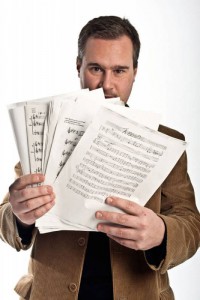 Jazz piano player and teacher Michele Francesconi has released Pianoforte Complementare in stile Pop Jazz (Volontè & Co., 2015). The book has a well defined methodological aim: Francesconi focuses his research on the basic accompaniment both in pop and in jazz music. The method follows his teaching experiences in order to resolve the students’ difficulties. Francesconi also organizes the book keeping in mind the need of synthesis and practicality for the musicians on their learning processes.
Jazz piano player and teacher Michele Francesconi has released Pianoforte Complementare in stile Pop Jazz (Volontè & Co., 2015). The book has a well defined methodological aim: Francesconi focuses his research on the basic accompaniment both in pop and in jazz music. The method follows his teaching experiences in order to resolve the students’ difficulties. Francesconi also organizes the book keeping in mind the need of synthesis and practicality for the musicians on their learning processes.
Which are the starting points of Pianoforte Complementare in Pop Jazz Style?
I wanted to gather the works I have done as a teacher in the last twenty years with the intention to give an accurate scheme at the material I use during my piano lessons. The opportunity to realize an organic publication is a good chance to obtain this result.
There are two licences in your book. Could you tell us something about them?
The first one is the technique of “Nota Perno”. It’s a simple and practical scheme that I introduce in order to made the voicing coherent in relationship to the melody. In the second half of my book, I explain a writing method useful for fix a voicing in the lead sheet with the “translation” in letters of the notes we have to play with the left hand.
You write in Pianoforte Complementare in Stile Pop Jazz a lot of examples and pictures in order to let the student focuses about the difficulties and the solutions of any situation.
Usually, we take for granted several concepts about posture and piano technique. I want to bring in my book some of these advices. My opinion is that a lot of students buying the book or that follows the courses of Complementary Piano may not have a classical background.
In the introduction of the book, you state that you prefer to focus on the content rather than the action, you wish to concentrate on the substance rather than on the form. How do you explore this “separation” in the book?
This is not a book about “jazz pianism”, this is not a textbook about solfège, musical theory or harmony, even if I use a large amount of written examples. In my book, I didn’t work on the gestural side of the jazz improvisation neither I didn’t talked about the repertoire of jazz piano players. I was focused on harmonization and on the basic accompaniment in the modern musical languages. I imagine that this method has to work with non-piano-players, even if I put some advanced topics. And for these aspects the book could be useful also for piano players and teachers.
The Song is the centre of this teaching book, both for the general planning of your method and for your focusing on the roles of arranger or accompanist.
Sure. The book is focused on the repertoire of pop ballads and on the Great American Songbook.
 You start teaching very early. What means for you this side of the musical work? What benefits and what negative effects have been in your teaching?
You start teaching very early. What means for you this side of the musical work? What benefits and what negative effects have been in your teaching?
There’s a lot of benefits. First of all, the clearness about the music: I believe that if you want to learn something in depth, you have to know how to teach it. The relationship between teaching and musical research has to be balanced, otherwise you remain safe in your comfortable positions and you don’t take any kind of risk. I hope that the records I have done and the ones that I still plan would be the proof this balance.
What are the feedbacks you had after the release of the book from students and teachers?
Pragmatism and synthesis are the properties that people finds in this book, together with the empirical and inductive method that I used for expose the examples. Playing is like learning a language: in my opinion the way that leads you from the detail to universal rule is the more effective way to understand what you are doing.
Michele Francesconi is graudated in piano and jazz music. He teaches in the Conservatories of Adria, La Spezia, Cesena, Perugia and Bologna. He publishes several records, among them: Italian Tunes (Z-Best Music, 2006); Mozart In Jazz (Splasc(h) Records, 2007); Recital Trio (Widerlook, 2008); Quintorigo Plays Mingus (Sam Productions, 2008); Pane e Tempesta di Paolo Damiani (Egea Records, 2010); Twice (Abeat Records, 2011); La Donna Di Cristallo di Cristina Zavalloni & Radar Band (Egea Records, 2012); Skylark (Zone Di Musica, 2013); Bologna Skyline di Andrea Ferrario & Michele Francesconi (Alfa Music, 2015). He plays in many italian jazz festivals and jazz clubs. He is the artistic director of Zingarò Jazz Club in Faenza.
Questo post è disponibile anche in: Italian

 English
English Italiano
Italiano 





Leave a comment
You must be logged in to post a comment.